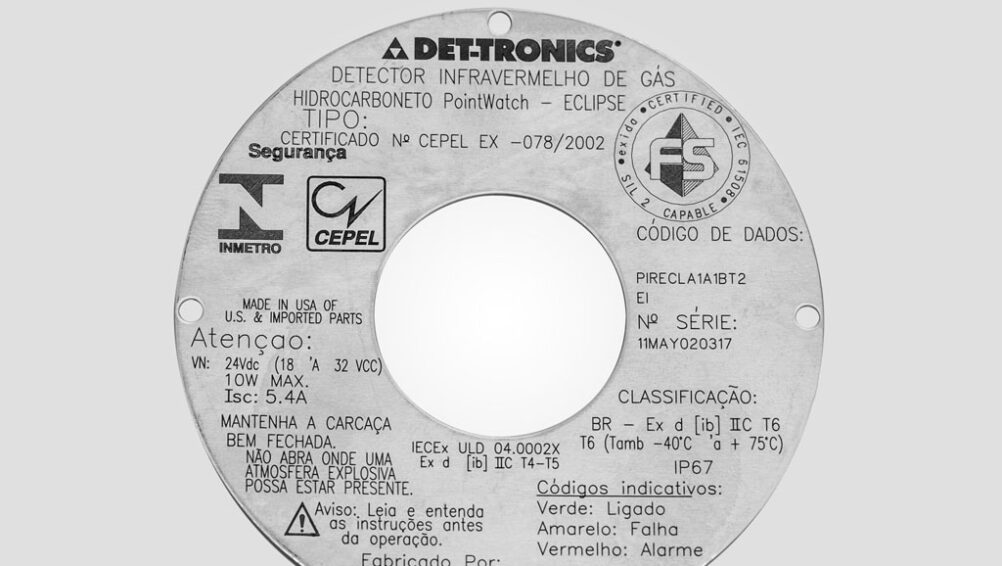Laser marking is a material treatment method that uses pulsed lasers and scanning heads. There are several different methods of laser marking, including engraving, removing, staining, foaming and annealing.
Oxidation or anneal marking is one of the most popular and effective techniques for marking metals, such as steel and titanium. With this method, lasers are able to provide fast, permanent marking of text, machine codes and graphics without unnecessary additives.
In this post, we’ll take an in-depth look at oxidation marking, covering the advantages of the technique, the potential for custom laser solutions based on the material and desired outcome, as well as some of the common applications of this method.
What is Laser Oxidation Marking?
Laser oxidation marking, also called annealing, is used to create a surface mark on metals. This method is different than other types of laser marking because it does not remove material; it uses laser-induced heating to create an oxide layer. The metal is chemically changed and the depth of the change is controllable on the surface of the metal. The result is a smooth mark with little raised material or marking debris.
Advantages of Laser Oxidation
Laser oxidation marking of stainless steel and other metals provides a fast, permanent process to mark products. The marks will withstand high temperature, weather, and wear and tear throughout the product’s useful life. Let’s take a closer look at the advantages of this technique:
Speed
Laser marking is one of the fastest marking methods available. With the right laser system, customized to specific manufacturing requirements, there is a high rate of productivity and increased efficiency. The integration of vision systems, automation, and/or robotic elements can further drive results.
No Contact Process
Laser oxidation marking uses a highly-focused beam of light to produce the desired mark. Since there’s no need for physical contact, no extra stress is placed on the parts, reducing the potential for damage to the final product.
High Contrast, Permanent Marks
A clearly legible mark is often the primary objective of laser marking processes. With oxidation marking, the process consistently produces a high quality, high contrast mark – and it’s completed without creating a surface texture. The result is a durable mark that withstands high temperatures and the repeated abrasion of harsh cleaning.
No Waste Process
Marks are created by using a laser beam to heat an area close to the material’s melting point. The heat penetrates anywhere from 20 to 30 µm deep in the metal surface but, for certain applications, it can be as shallow as 5 µm. This allows the laser to generate oxide layers in the area’s surface. As nothing is removed from, or added to, the material surface during the annealing process, it remains smooth throughout and the color change is achieved through localized material heating only. There are no byproducts produced or post-processing cleaning necessary.
Common Applications for Oxidation Marking
Laser oxidation marking is a technique that has many applications across diverse industries. Here’s a look at a few of the industries and applications where laser oxidation is often used:
Stainless Steel Appliances
Over the past decade, stainless steel appliances have grown tremendously in popularity. As a result, manufacturers have sought the efficiency that laser oxidation marking provides to incorporate into their production line. It’s a great solution for applications because these products – stovetops, refrigerators, dishwashers, microwaves – require durability, functionality, affordability, corrosion resistance, sturdiness, aesthetics, and safety. Laser oxidation checks all these boxes – and is often the fastest and most cost-efficient solution.
Medical Tools
Oxidation laser marking has also been used in the manufacture of medical tools and implants, particularly to comply with the FDA’s Unique Device Identification (UDI) requirements. Medical implants and devices are permanently marked without changing surface texture, which may irritate tissue or affect the tactile feel of instruments. Oxidation marks can also be subjected to repeated autoclave cycles to sterilize instruments without surface corrosion.
Other Applications
Other products that use laser marking include stainless steel beer kegs as they often require permanent marking of serial numbers for traceability. Similarly, automotive and aerospace bearings are anneal marked to create highly legible images with permanence. The result is more durable than engraving or other surface altering processes that could develop into micro cracks and eventually weaken the structural integrity of the part.
Final Thoughts
Laser oxidation marking is a technique that has broad applications across industries. Because of its many advantages (speed, non-contact process, high contrast and permanent marks, and no waste), it meets the requirements of many applications.
Control Micro Systems (CMS Laser) has extensive experience designing and manufacturing laser systems to mark stainless steel and other metal parts for our clients. Is laser oxidation marking the right solution for your manufacturing challenge? Our Applications Lab provides a no-cost review of your samples and will determine the process parameters that mark your parts to meet your specific requirements.
For more information on this and other methods of laser marking metal and how CMS Laser can develop a system to meet your needs, contact us today.


